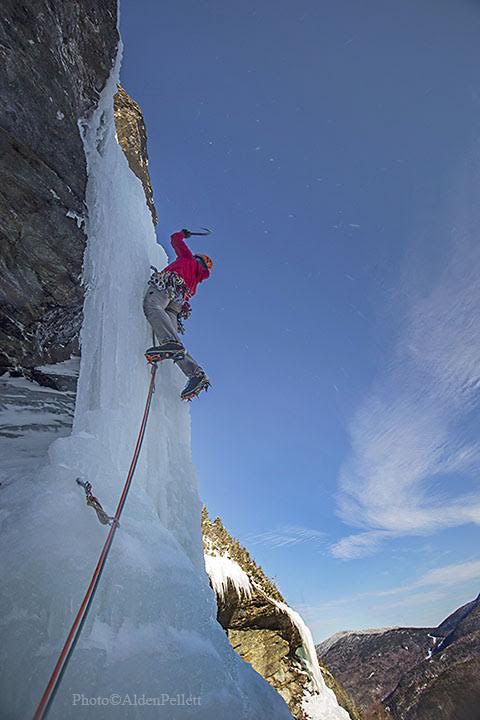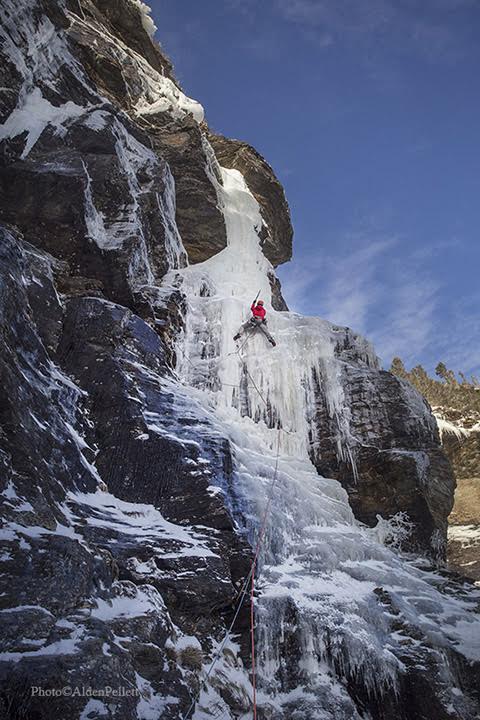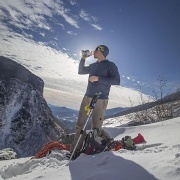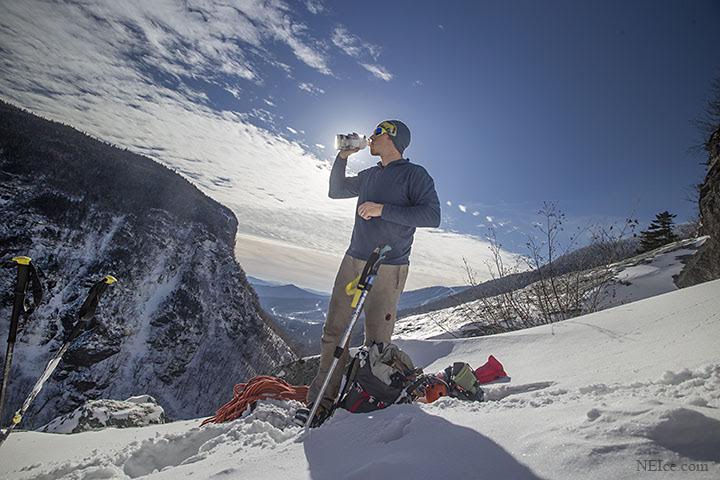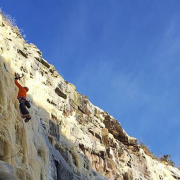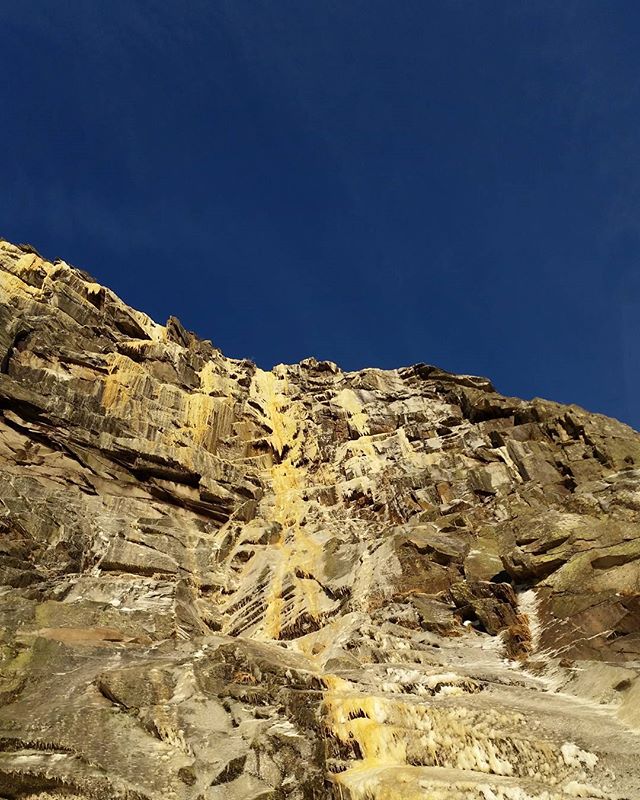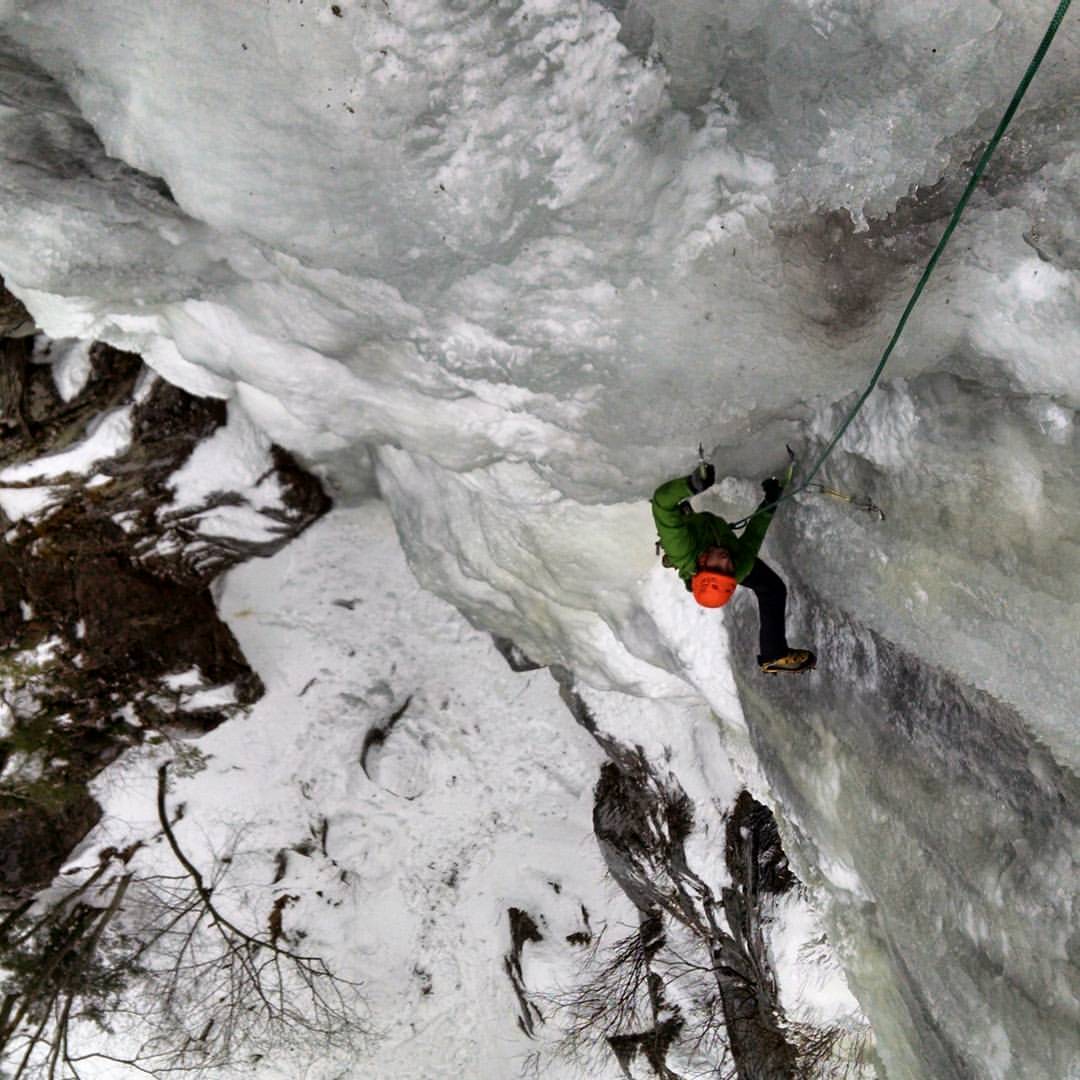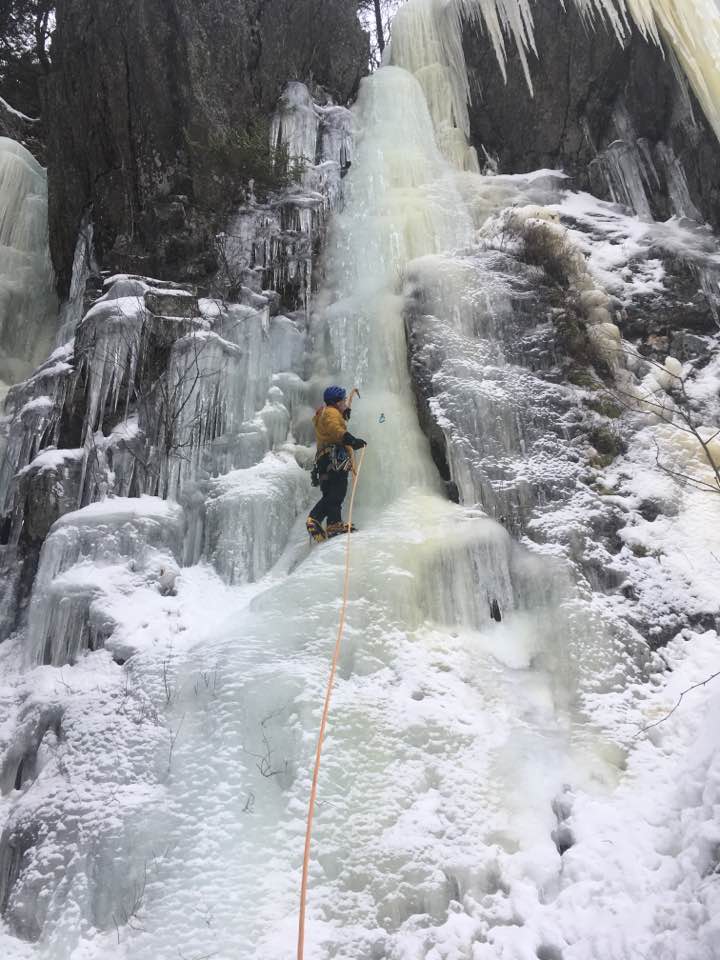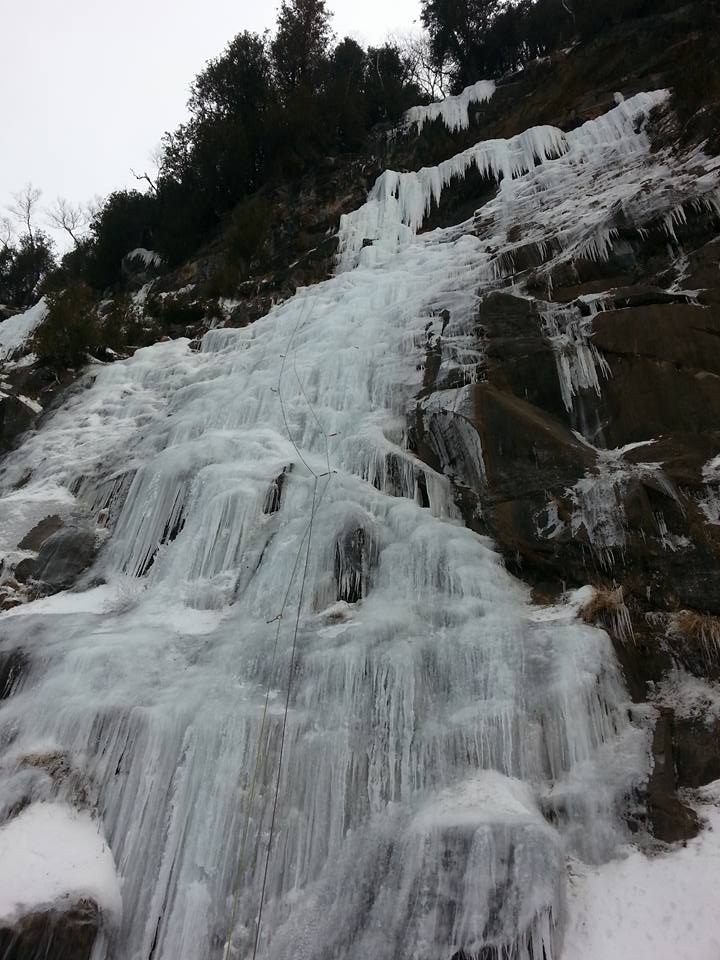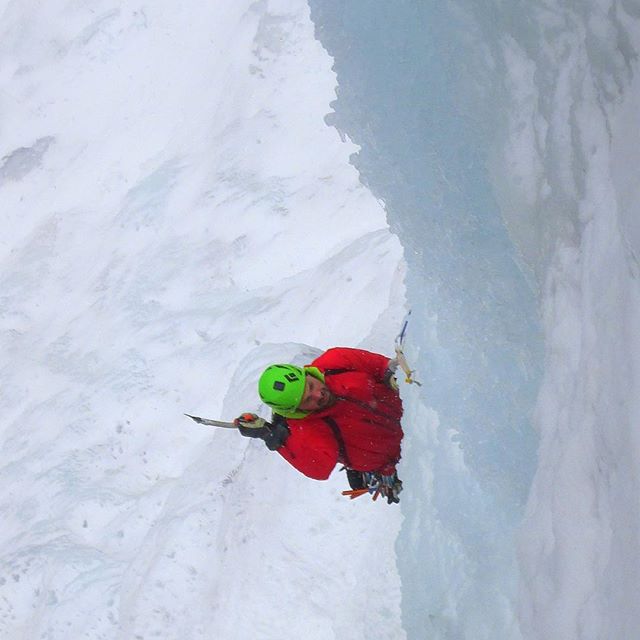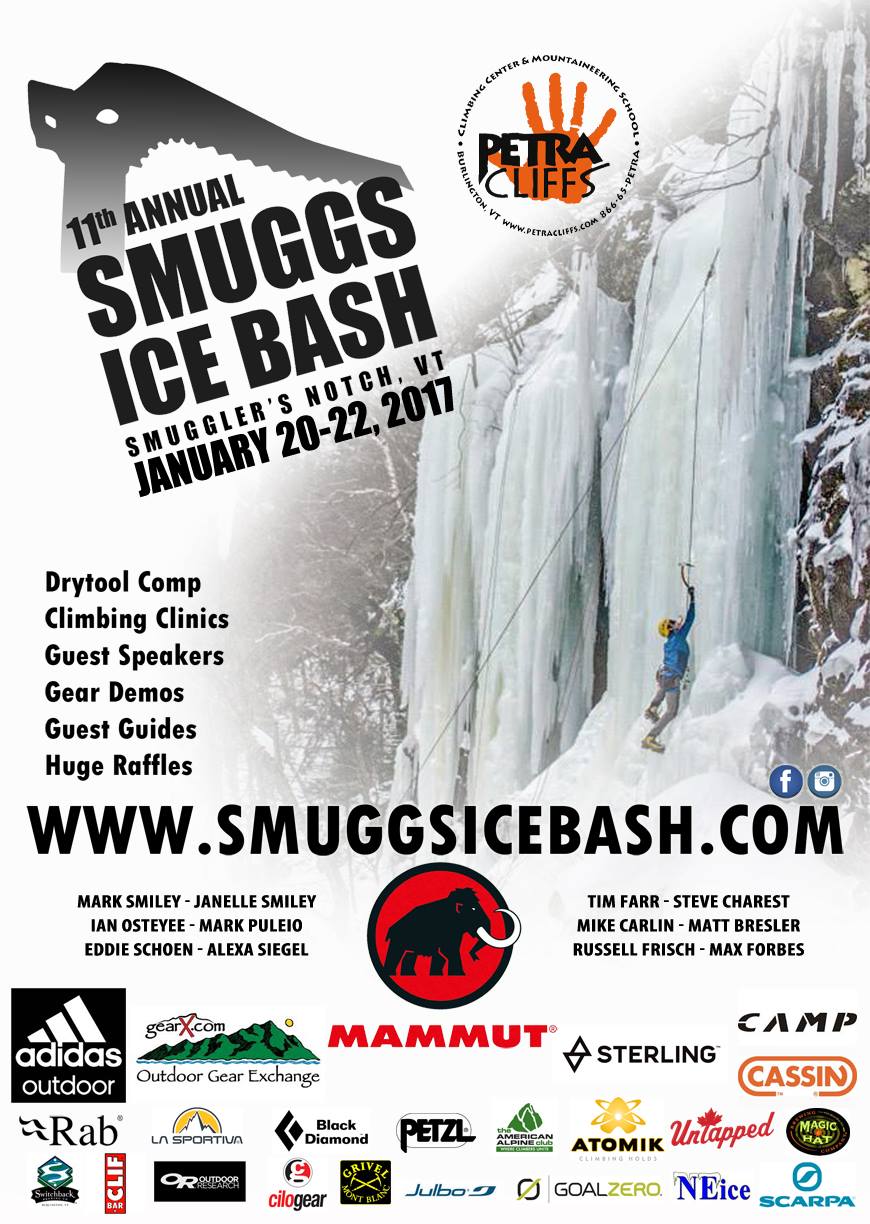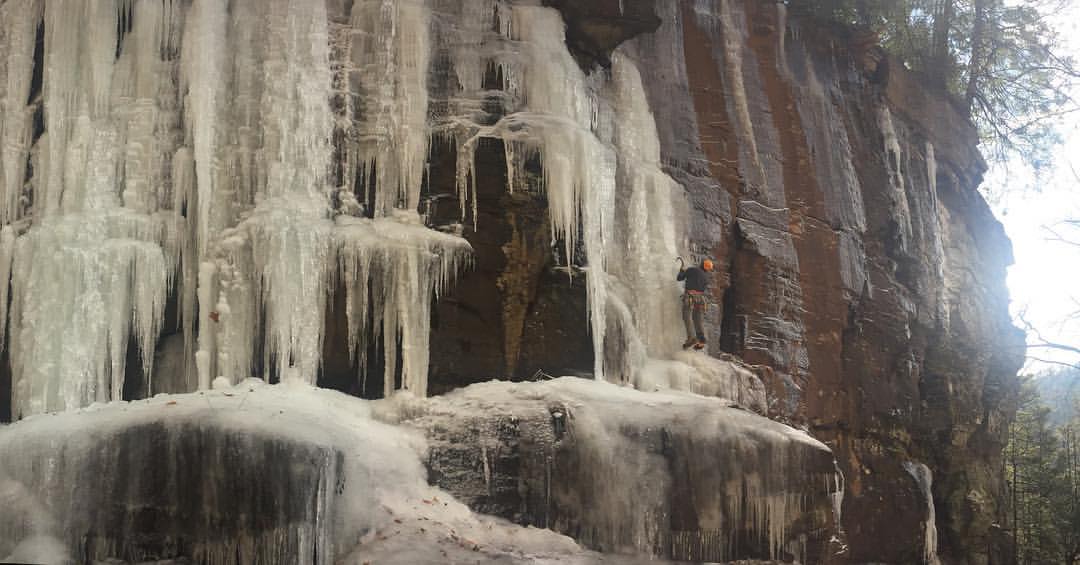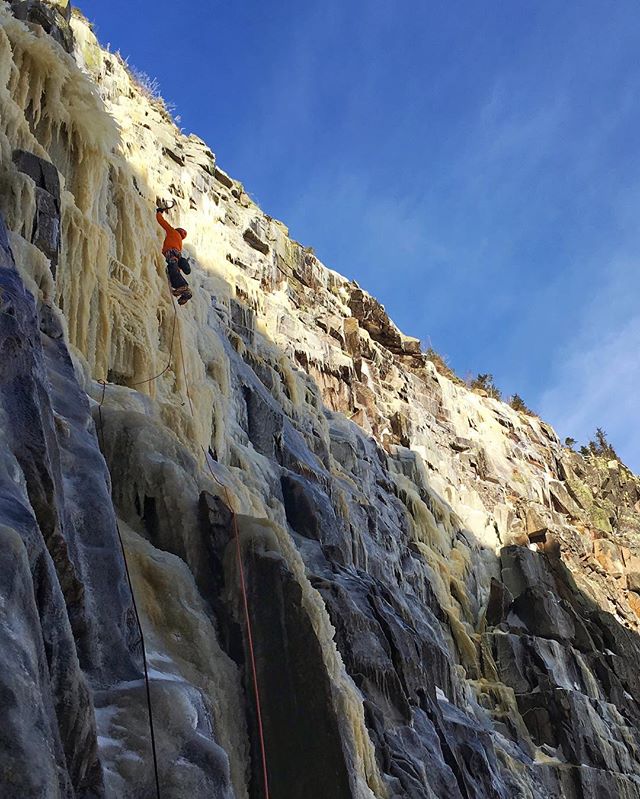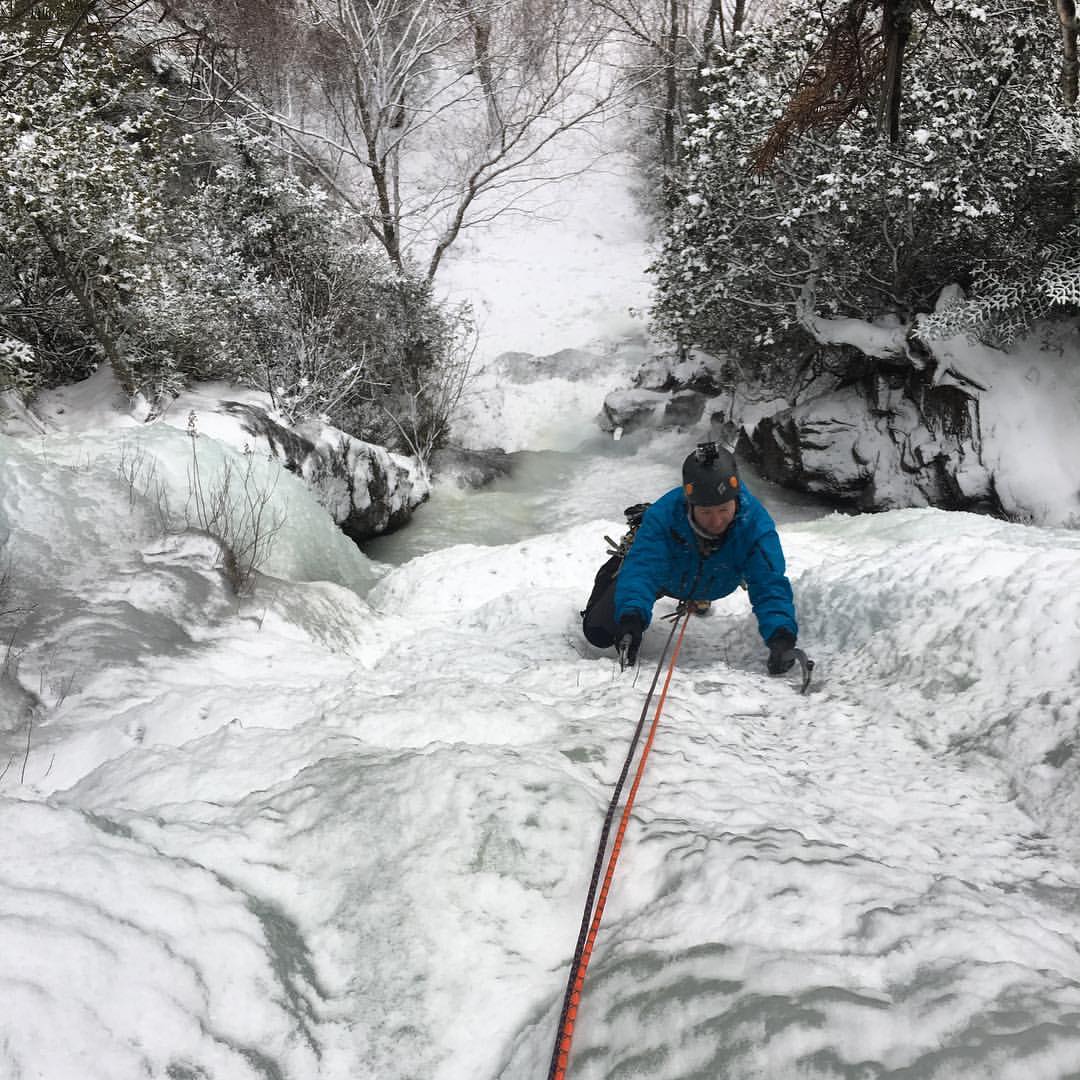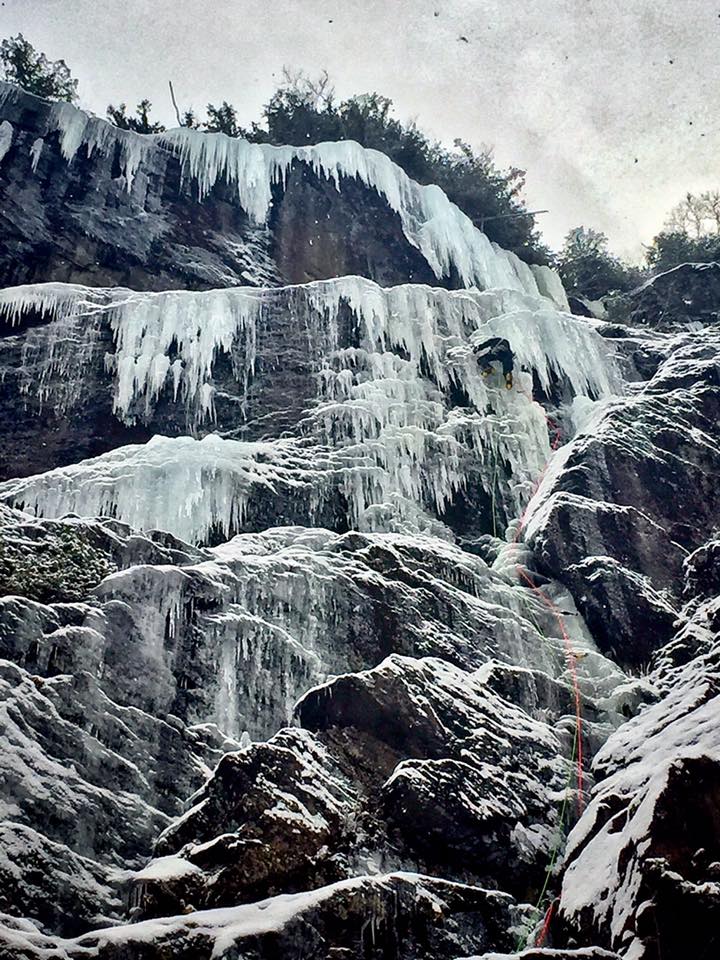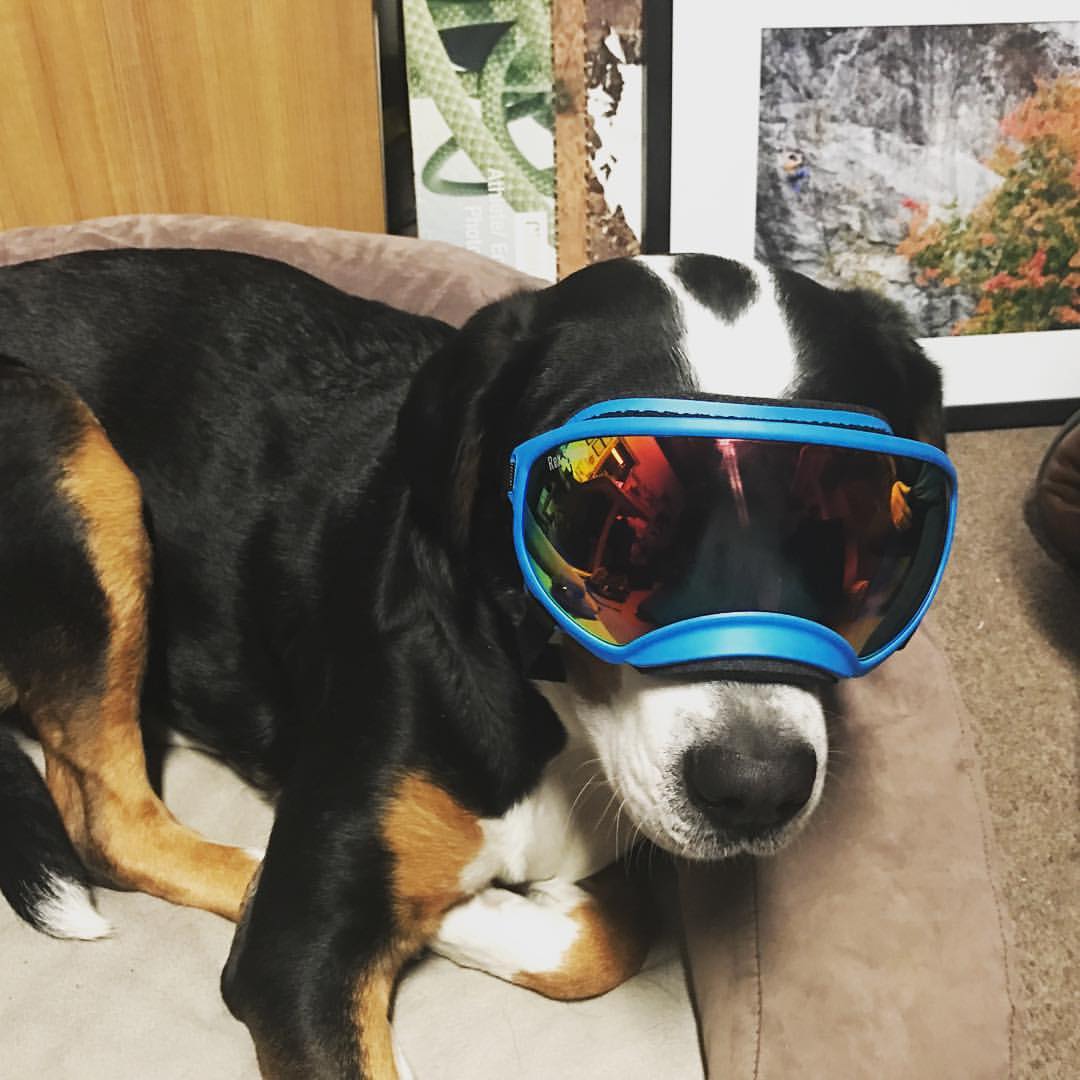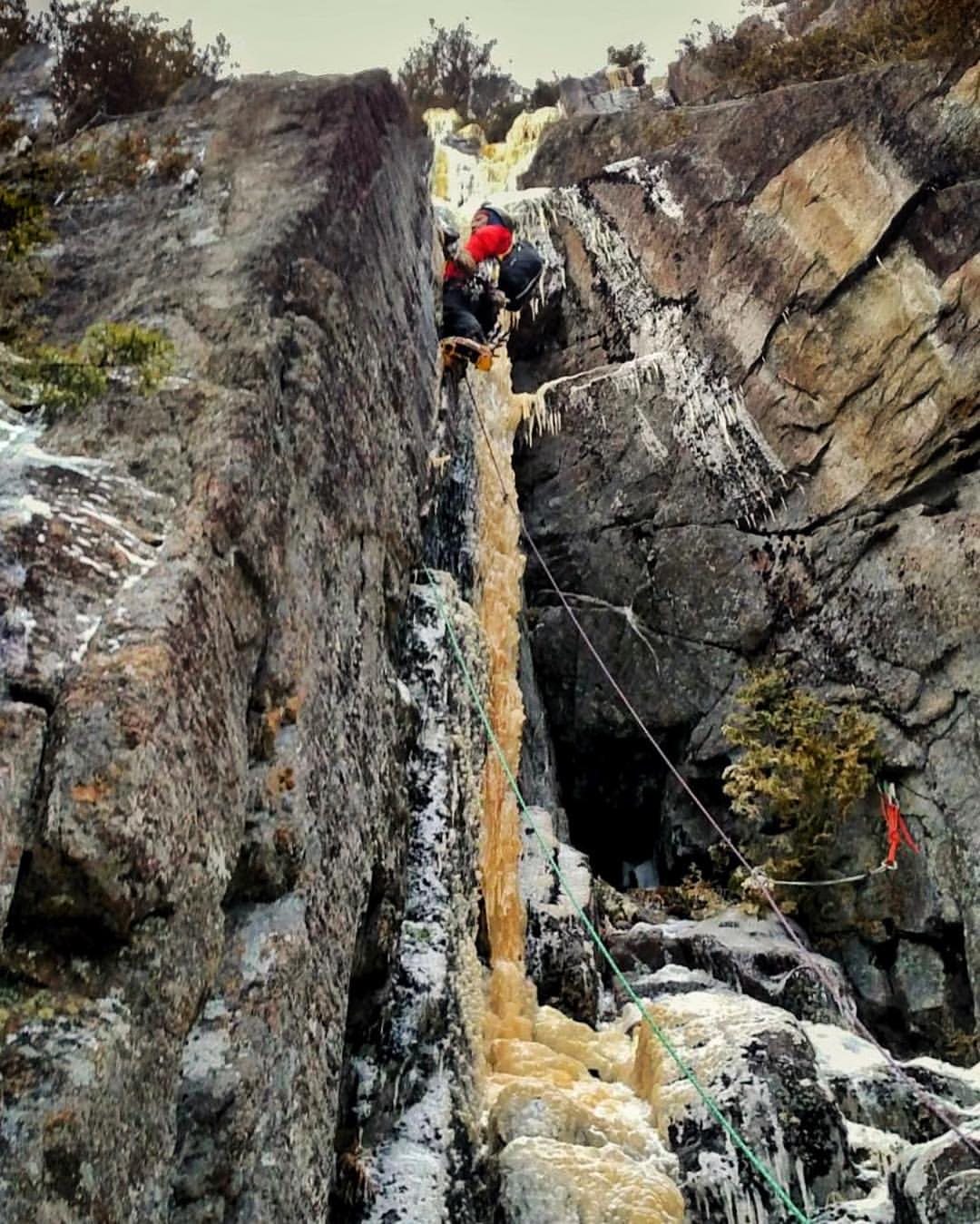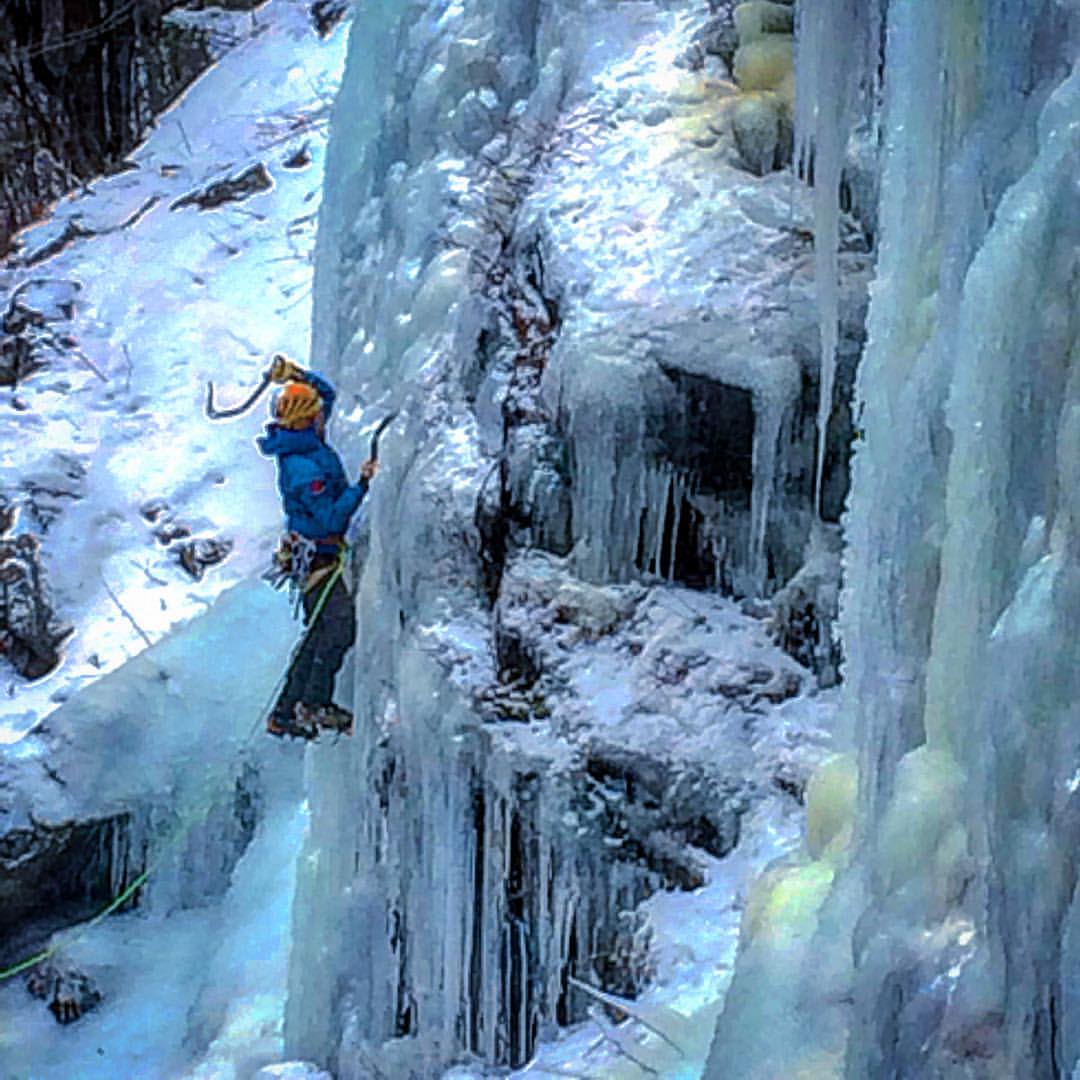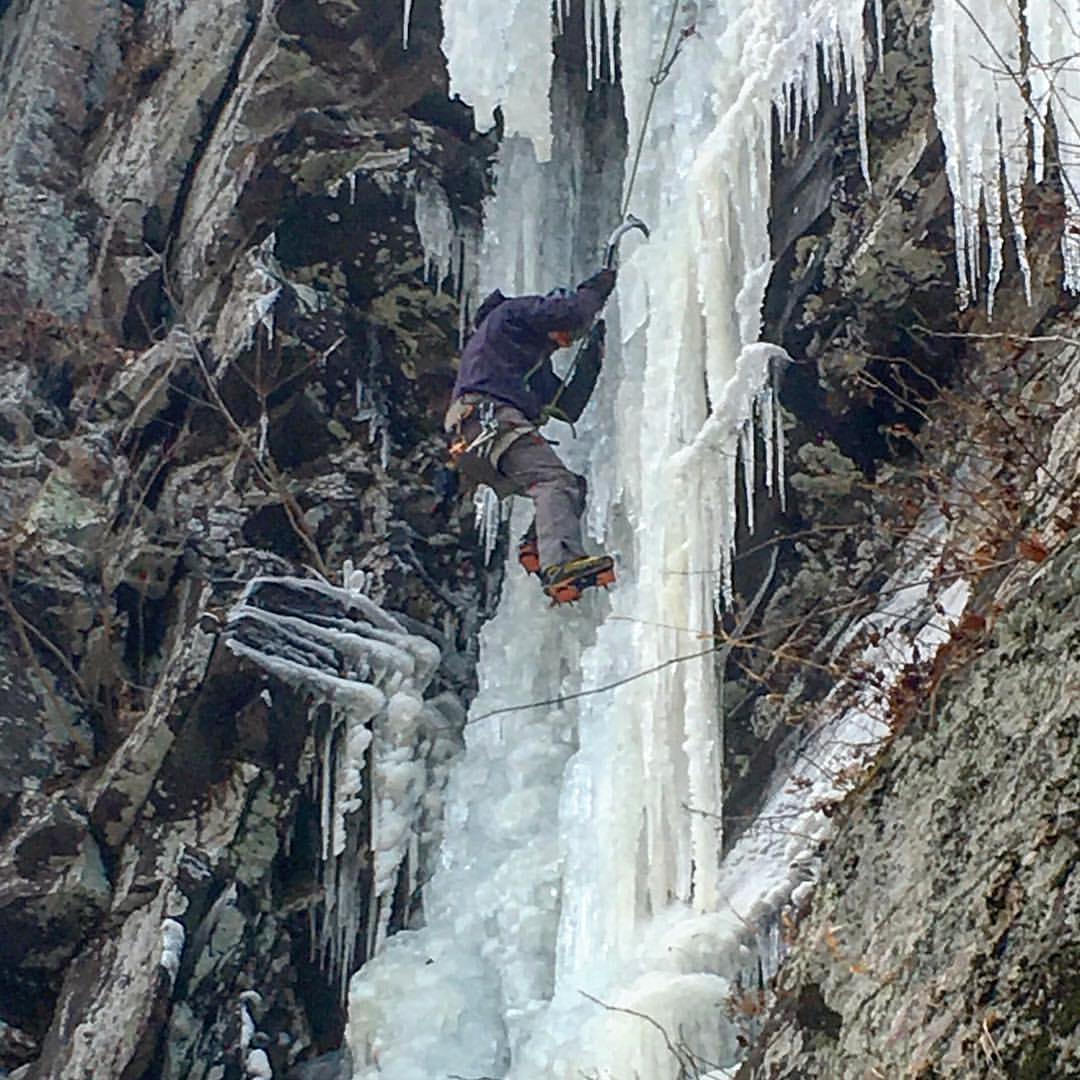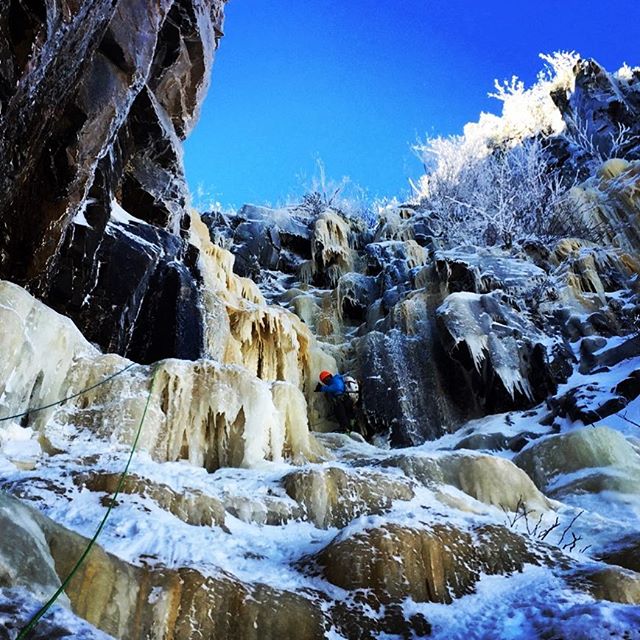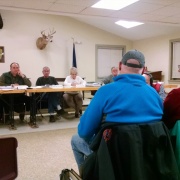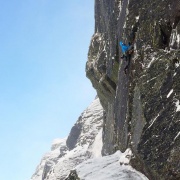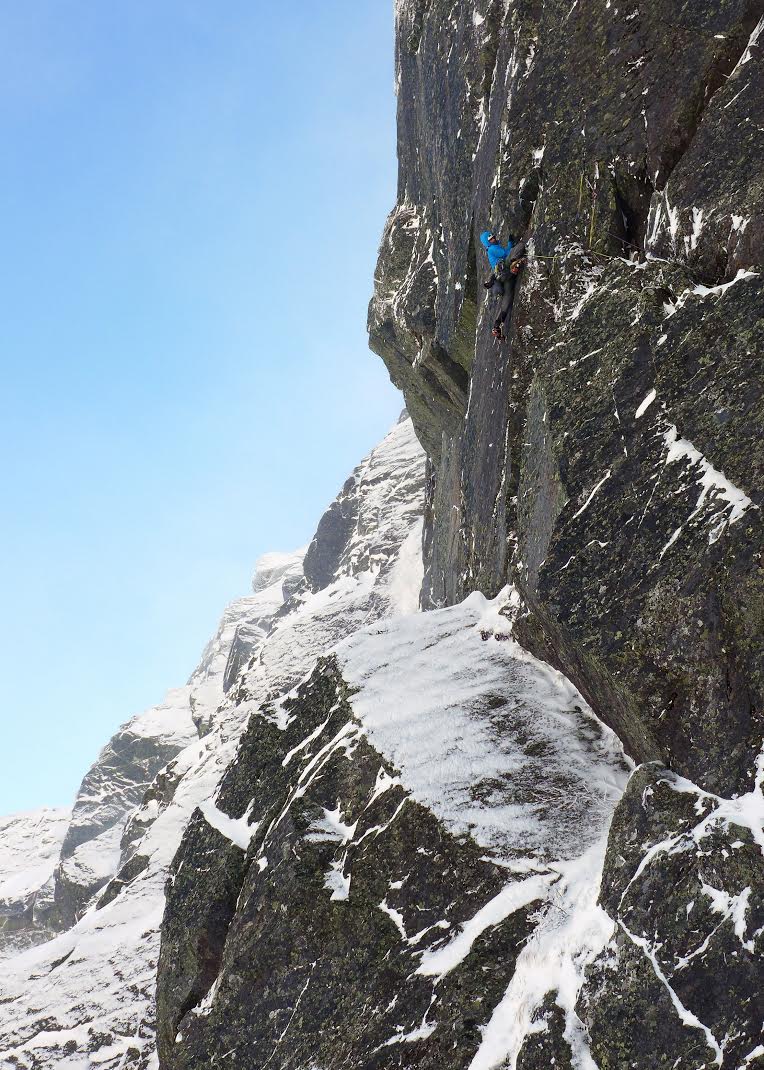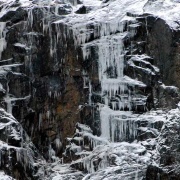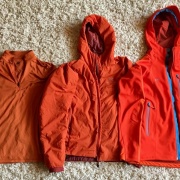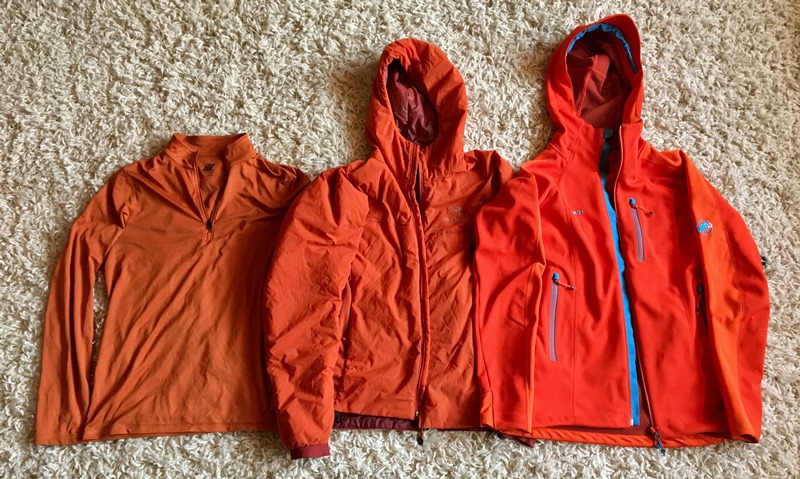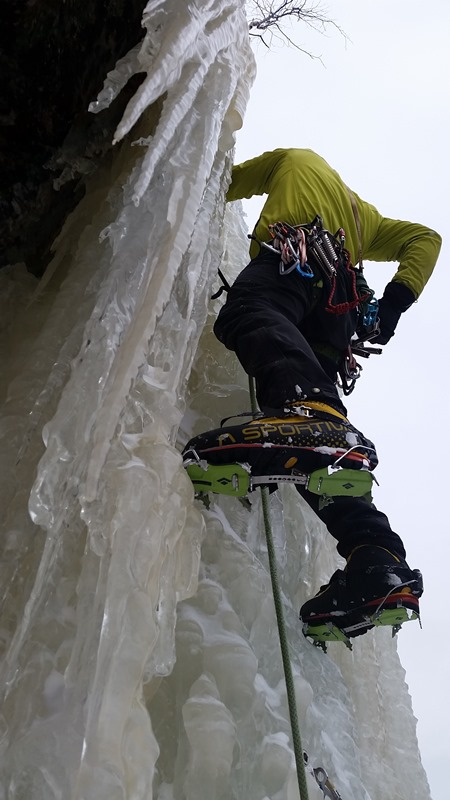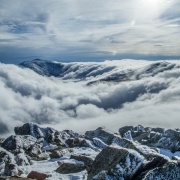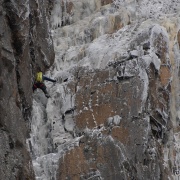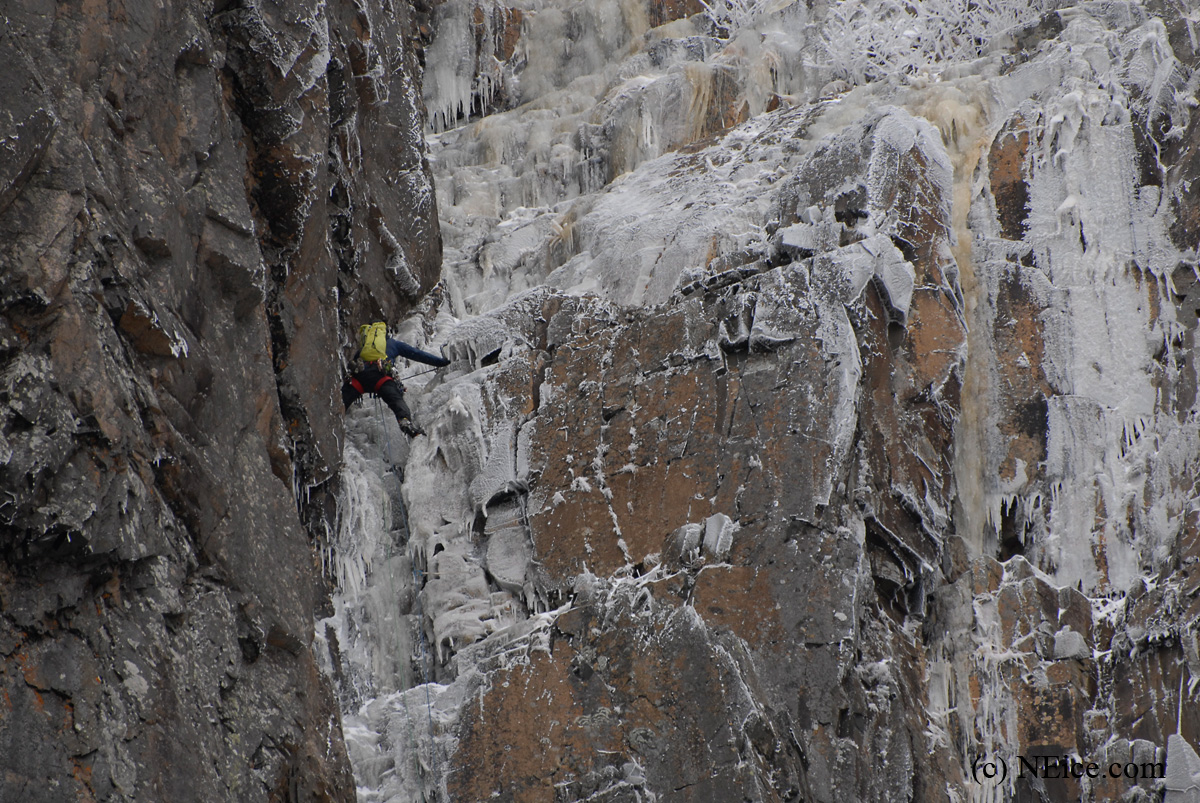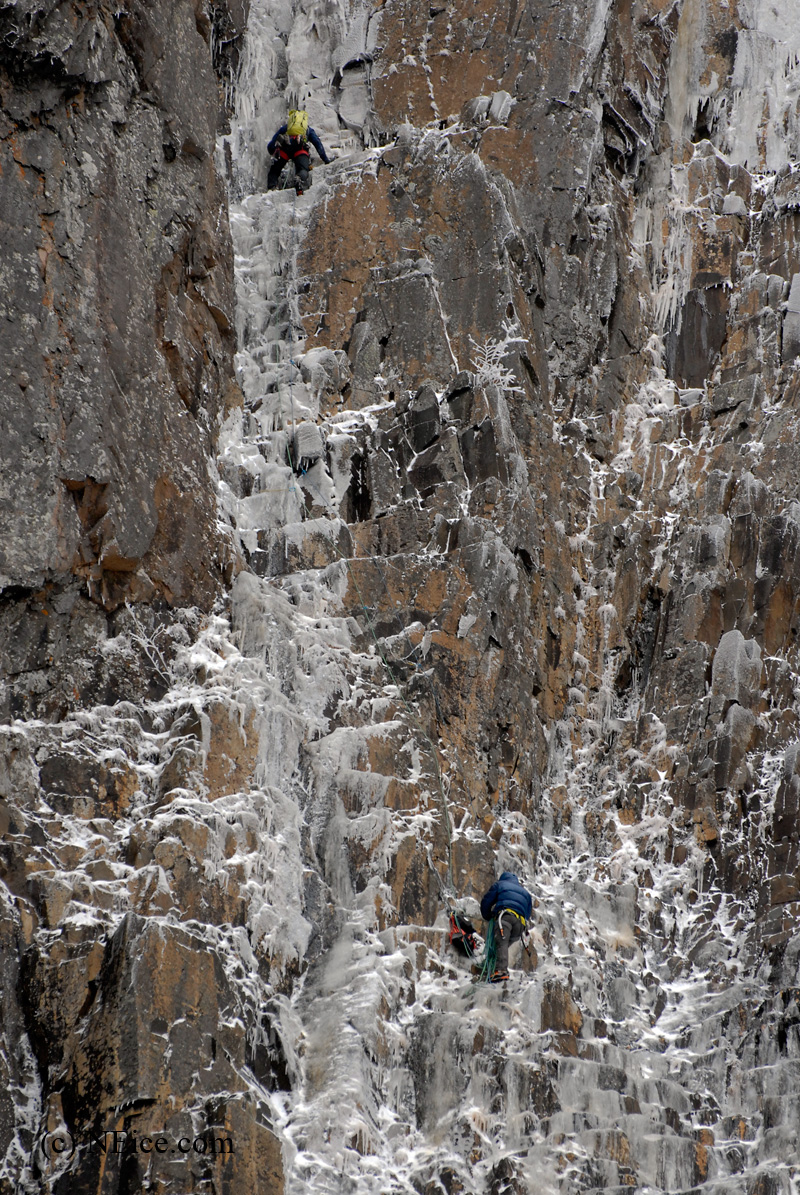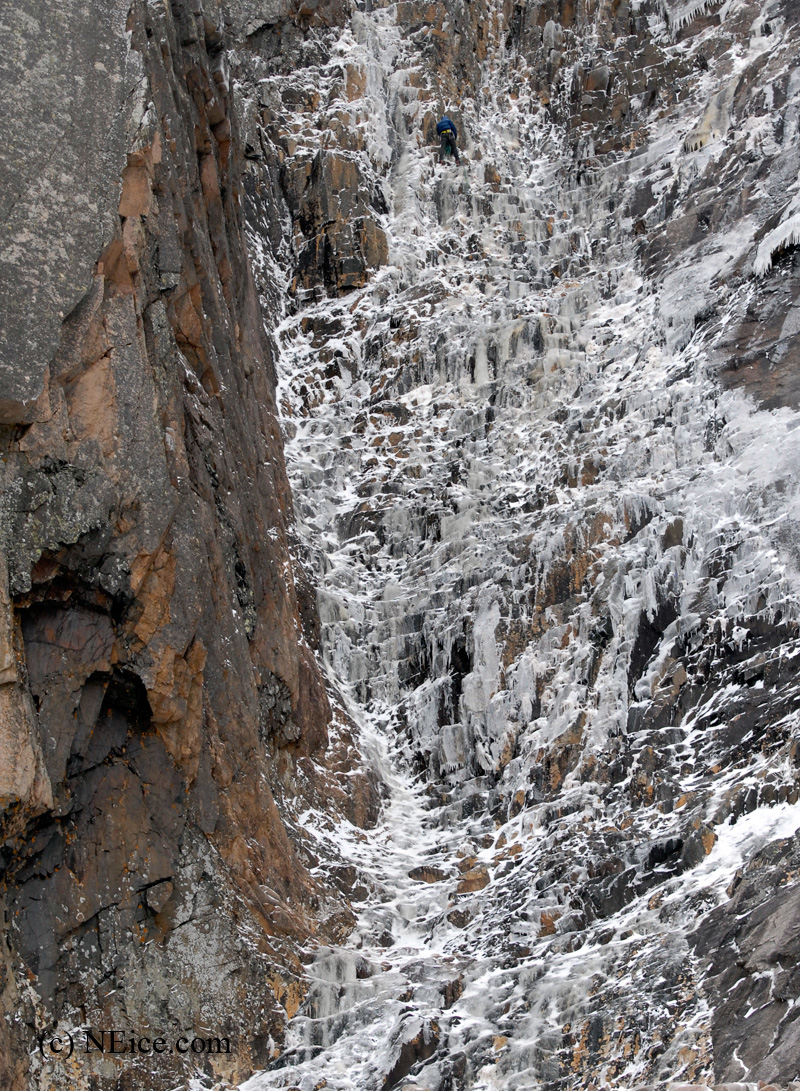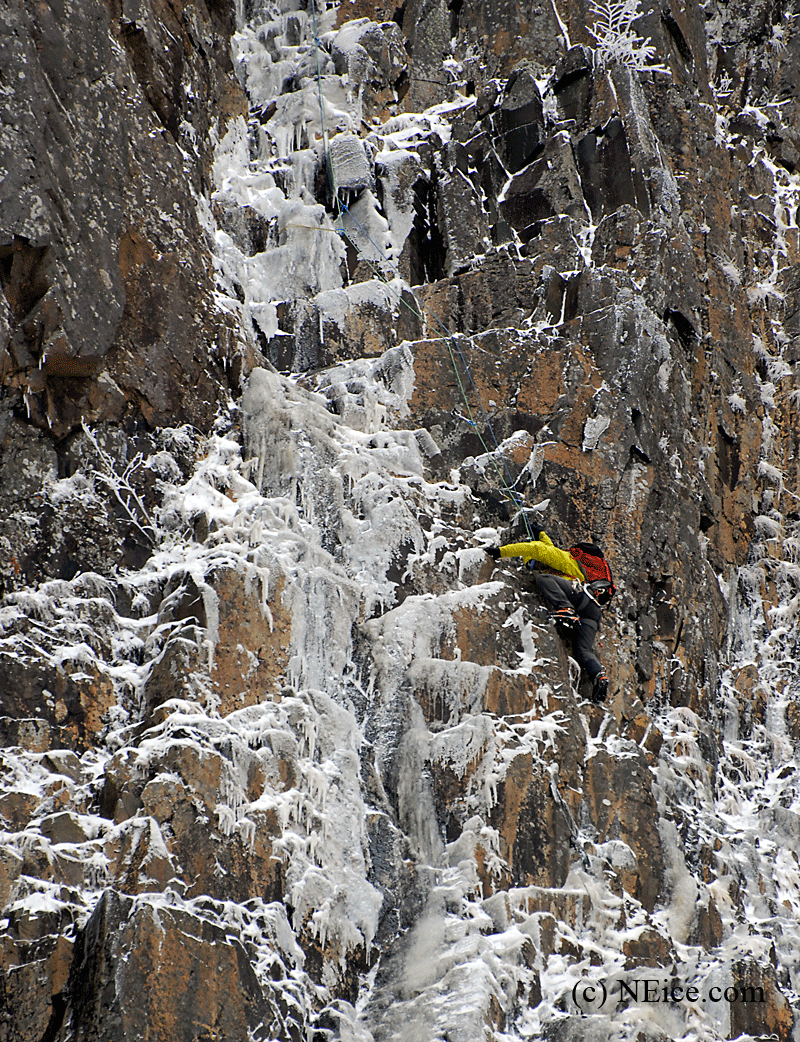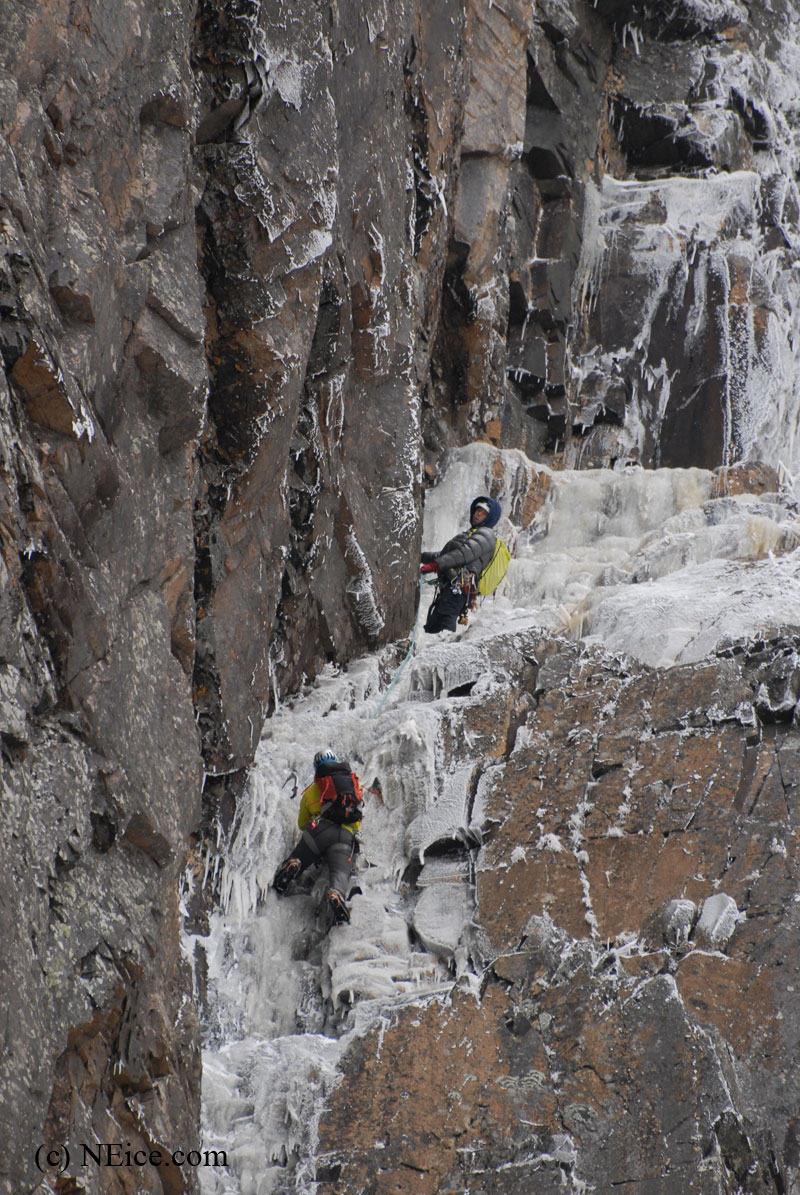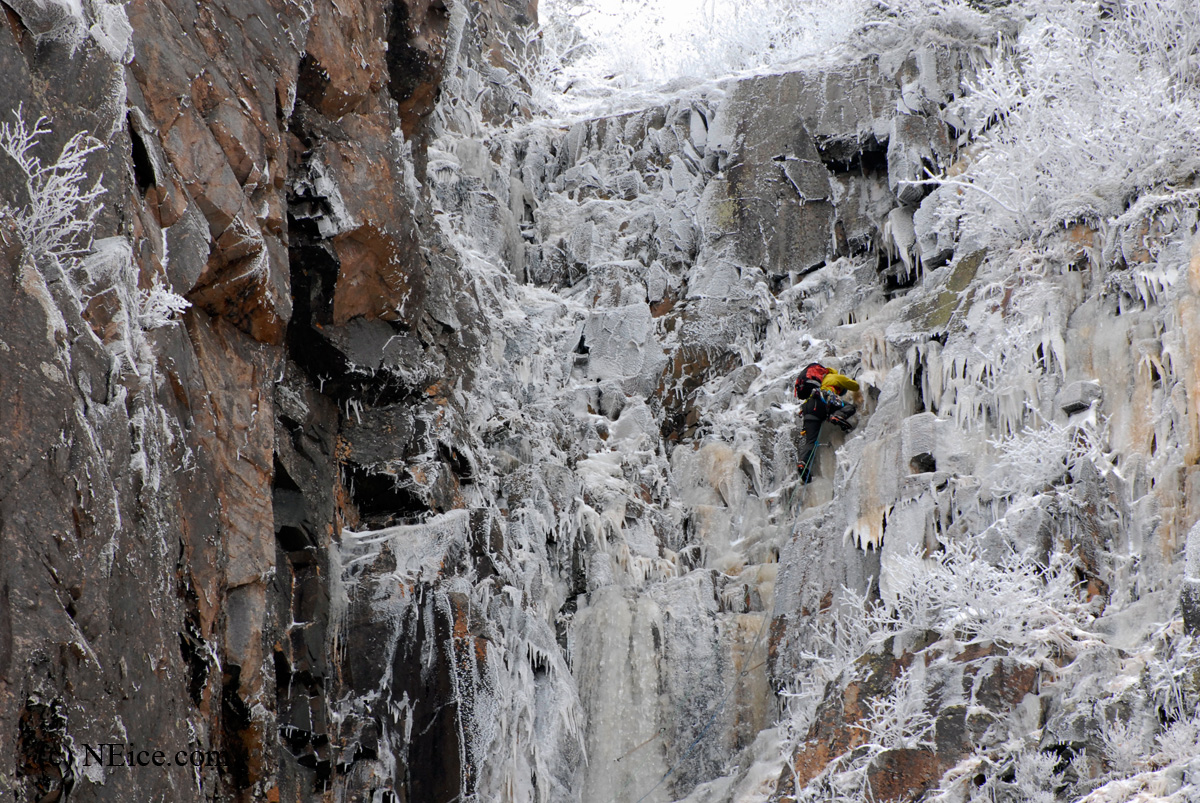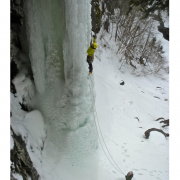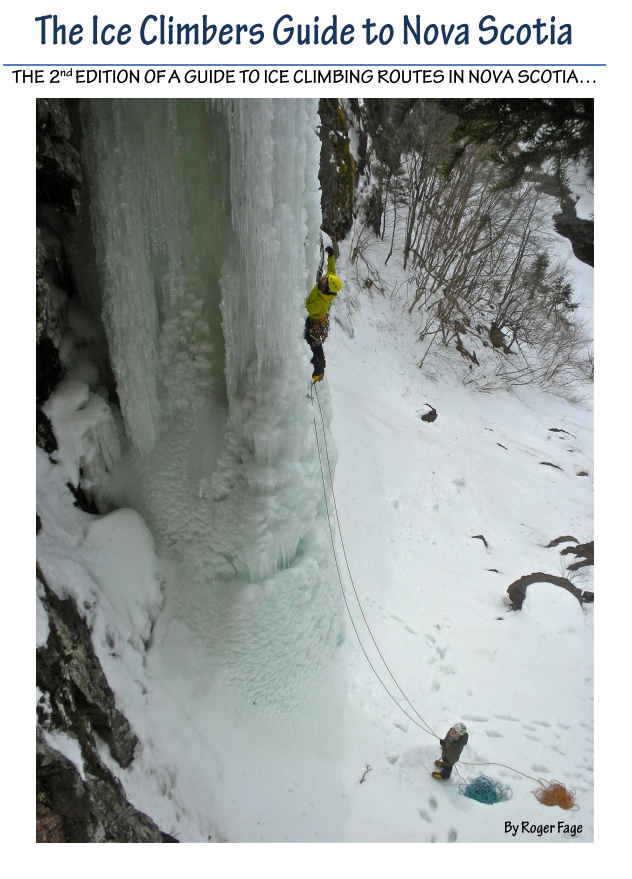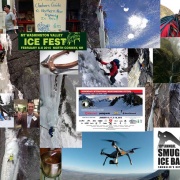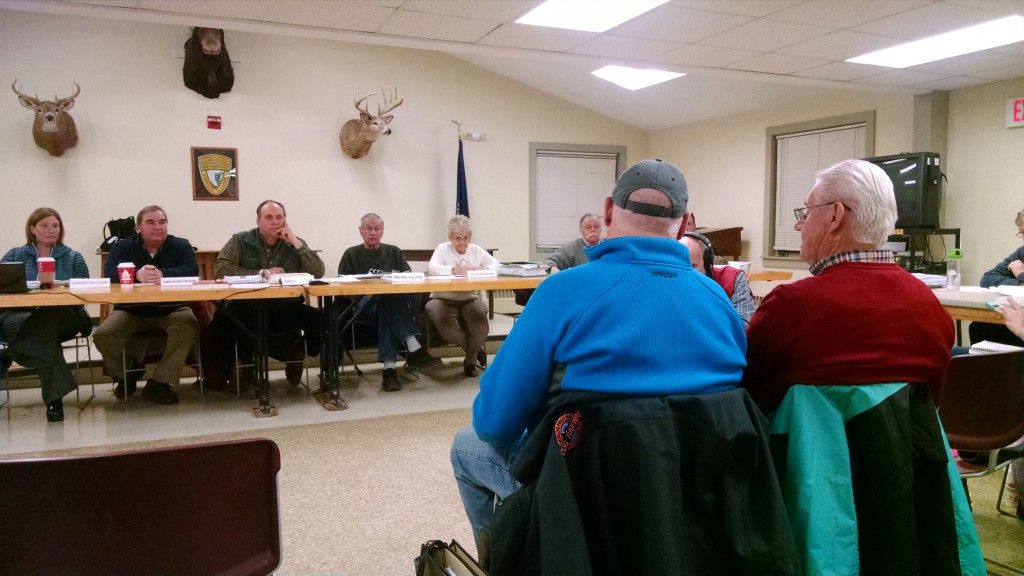
Cog Railway owners appearing before the planning board (Wayne Presby in red) – Doug Millen
When History Threatens The Future
When I heard about the Cog Railway’s intention to build a 35 room upscale hotel and restaurant along their tracks on Mount Washington, I almost didn’t believe it. I felt frustrated and angry over the fact that there are people with the ability to tamper with something I love. For many of us, Mount Washington is our place to experience nature’s force, and to challenge and humble ourselves in a wild and frequently harsh and unforgiving environment. My time on Mount Washington’s slopes has made a significant impact on shaping the person and climber I am today. Although I am fully aware of the what occurs just above me on the summit, I remain on the ice and rocks of the ravines below and see a mountain too special and unique to be the victim of selfish interests. As chronicled in Mount Washington’s long history, it’s apparent the mountain has meant something entirely different to others.
Building and development is nothing new in the White Mountains, especially on New England’s highest peak. As early as the mid-19th century, the mountain was developed into what can be considered one of the first tourist destinations in the country. Numerous bridle paths, most notably the Crawford Path completed in 1819, were constructed to the summit. In 1861, when the five-year road project was complete, the mountain suddenly became accessible for all. Waiting on top for the growing number of visitors were hotels and restaurants beginning in the 1850’s all the way until 1980, when the last hotel was demolished for the construction of current Sherman Adams Visitor Center. Despite devastating fires the 1900’s, developers continued to build and re-build hotels and restaurants to attract more visitors each year. Battles over ownership of the peak frequented the New Hampshire court system, a telling sign of the mindset of that era. It didn’t take long after European settlers first saw the mountain for it to become the center of exploitation.
After the road was open to the public, its business doubled every year until 1869, when the most impactful event happened. The Cog Railway was complete. It was a turning point for life on the summit of Mount Washington. “Never again by the new rail can he have the sensation that he enjoyed in the ascent of Mount Washington by the old bridle path from Crawford’s, when, climbing out of the woods and advancing upon that marvelous backbone of rock, the whole world opened upon his awed vision, and the pyramid of the summit stood up in majesty against the sky. Nothing, indeed, is valuable that is easily obtained.” -Charles Dudley Warner, 1886. Now, 130 years later, this same entity is trying to repeat history, but I believe at a higher cost as the sensitive alpine environment is continually under the threats of our current age.
I don’t deny or ignore the history of Mount Washington when I plead my case to stop further development on the mountain. It would be impossible. It is that history preventing efforts to conserve what remains of not just Mount Washington but all areas of the White Mountains under constant risk of human intrusion. The precedence has already been set, as pointed out by the owners of the Cog Railway, and used as an argument to support the hotel’s construction. Just last year, the Appalachian Mountain Club (AMC), who owns and maintains the existing and historic hut system along the Appalachian Trail, announced their intent to construct a new hut in the already overcrowded area of Crawford Notch. Thankfully, days after the Cog Hotel news broke, the AMC officially terminated their plans, noting the opposition they were receiving. Maybe it’s time to change history for a better future for our mountain ecosystem we cherish. Let’s allow our future generations to enjoy an untarnished landscape and teach them care and conservation through our present actions.
Thank you to my fellow hikers and climbers who feel similarly to myself and are actively fighting the construction of this hotel. The following information has been pulled together by the help of this community who love the White Mountains.
-Courtney Ley
The Facts:
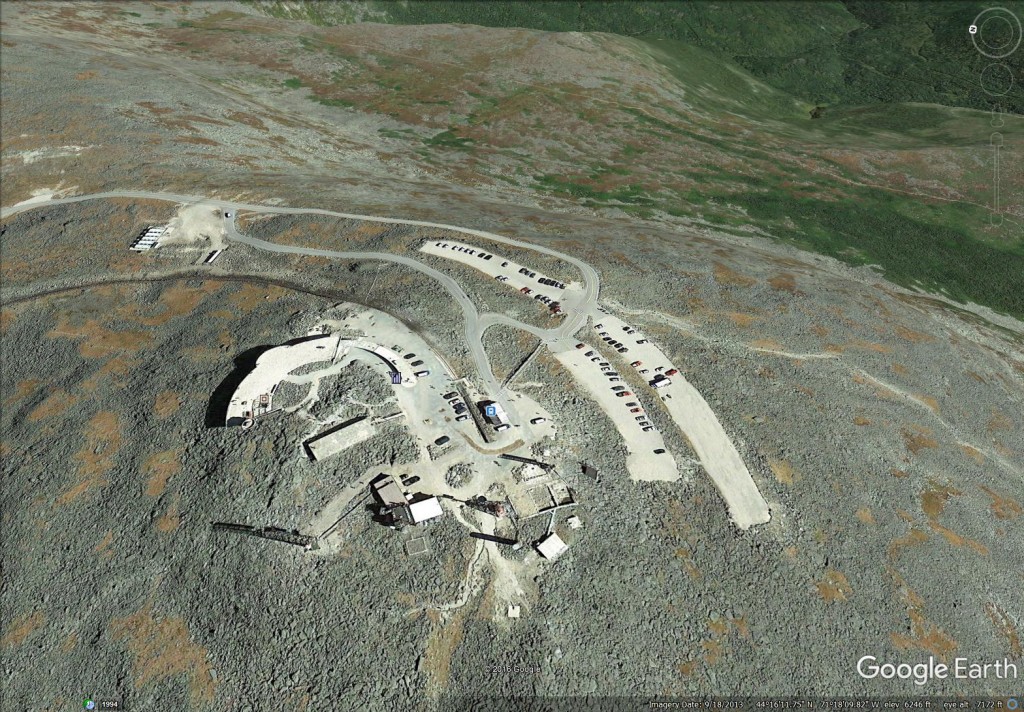
The Summit of Mount Washington NH
Mount Washington State Park is a 60.3-acre (24.4 ha) parcel perched on the summit of Mount Washington, the highest peak in the northeastern United States. Summer seasonal amenities include a cafeteria, restrooms, gift shops, the Mount Washington Observatory and its museum.
In April of 1894, the Mount Washington Summit Road Company, owners of the summit at the time, sold a 49 acre circular tract to the Mt. Washington Railway Company. That land constitutes the bulk of today’s Mount Washington State Park. A small segment of the summit is still owned by the Cog Railway and used as the upper terminus of the railway.
It would be a terrible intrusion, and assault on the fragile alpine zone of an already overcrowded Summit. It sets a bad precedent of commercial use for profit above treeline. Mt. Washington is the Jewel of the state, let’s treat it as such and preserve it for future generations to enjoy. – Doug Millen
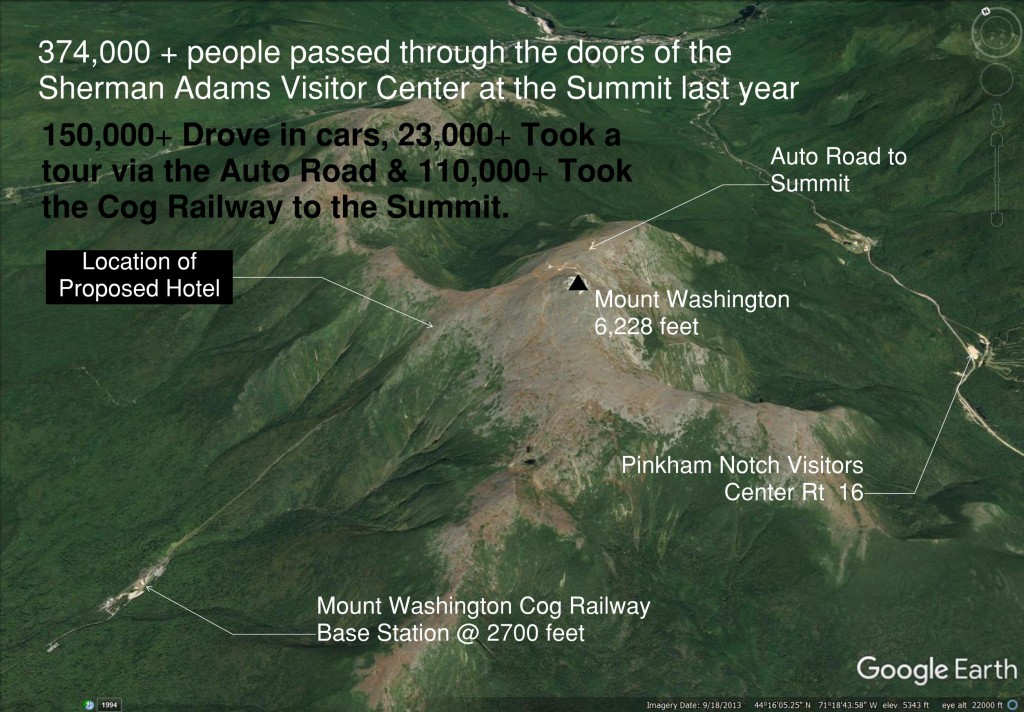
Sources: Mt. Washington Cog Railway, NH Division of Parks and Recreation, Mount Washington Auto Road, Google Earth and bostonglobe.com – Doug Millen / NEice.com
The Environment on Mount Washington:
Mount Washington is home to the unique alpine tundra natural community system and the Presidential Range accounts for more than half of the 13 square miles of alpine tundra in the northeastern United States. The mountain contains an exemplary (high quality) natural community of the alpine zone. It supports the richest assemblage of arctic-alpine plants in the region, most of which are rare in the coterminous United States. Scattered areas of krummholz, which are composed of dwarfed and matted black spruce and balsam fir, are also present. The Alpine Garden Research Natural Area (RNA), contains a former candidate for listing under the Endangered Species Act, the Boott’s rattlesnake-root. The New Hampshire Natural Heritage Inventory has determined that the RNA also contains 7 state endangered plants, 24 state threatened plants, 7 state rare plants, 3 state endangered animals and 2 state rare animals. (Source: USDA, Forest Service)
The Initial Steps:
A Planning Board meeting was held on December 8th where owners of the Cog Railway discussed their general plans for the hotel. The purpose of the meeting was a preliminary discussion with no consensus or decision making at this early stage. No formal application was submitted and it was not open to official public comment, however, over 40 members of the hiking and climbing community attended the meeting.
A Brief Synopsis of the Coos County Planning Board Meeting
Nickie Sekera – Social and Environmental Justice Alliance
December 9, 2016
The Coos County Planning Board held a meeting tonight (12-8-16) in Lancaster, NH where we listened to a preliminary review of a (conceptual) proposal of a 35 room hotel and restaurant at about 5,200′ of elevation in the alpine zone on Mount Washington. The Cog Railway owners opened up the discussion with their history on Mt Washington, citing that a previous hotel sat on the summit, to lean on the fact that a precedent of there being a hotel above treeline had previously been set.
They also framed the project as being a solution to the issue that they pinned on the state as a shortcoming, stating that they are unable to provide “proper services” to address “overcrowding” at the summit.
Funny, at the planning board meeting the owner of the cog was comparing his 35 room hotel proposal to the alps hut system and how similar it would be to there. Interesting to read how different you think this proposal is from the alps. The White Mountains is 1,225 sq mi and the Alps are 80,000 square miles (the state of Minnesota is 79,617 sq/miles), something to think about when you’re considering development here vs there.
-Anne Skidmore Russell
It was also stated that the Cog Railway currently subsidizes state operations at the summit to the tune of approximately $200,000 annually. While this project claims that it will be completely privately funded, they did ask for latitude on zoning.
No one could answer the question as to what the “maximum capacity” of the summit could sustain-ably accommodate, nor what the projected impacts would be with increasing the traffic, except that New Hampshire continues to promote the mountain without apparent concern of consequence.
We noticed that Fred King, the vice chair, presented with an air of confidence in this project. It’s difficult to say how the others level of concern may or may not be, but it is apparent that the Cog Railway folks are doing a “temperature check” and may be responsive to push-back if concerned parties start applying pressure to them publicly, citing the negative impacts.
Arguments in Favor of the Hotel:
Provide the Crowded Summit with Additional Amenities
They State: With the number of people visiting the summit, there needs to be additional accommodations. Wayne Presby, president and co-owner of the Cog Railway said in an interview that Mount Washington has become a victim of its own popularity. With 300,000 coming there every year and as many as 5,000 on the mountain on a given day, they said there aren’t enough amenities to serve the public. He stated it would ease congestion.
We Respond: The people already visiting Mount Washington, whether by the auto road, cog railway or hiking to the top, are there for just the day and most only stay for an hour or two. They aren’t looking for a hotel room or a fancy restaurant. The hotel will simply increase traffic in the alpine zone with its own guests and will not relieve the stresses of the current situation on the summit. The current configuration of the summit should be the limiting factor on the traffic it receives. Do not encourage more.
With over 374,000 coming every year to this, the highest point in the Northeast and as many as 5,000 on the mountain on a given day, do we just keep building to accommodate everyone that wants to come with no regard for the mountain, or the people that love this mountain?
Provide Local Jobs and Bring Tourism Dollars
They State: “The hotel and restaurant would create 20 new jobs, and provide an economic boost to the North Country through the use of local contractors,” Wayne Presby noted. In response to the opposition, he is on record saying the hikers who want the outdoors preserved are “elitist” and “[they] resist compromise that opens the outdoors to more people and brings in more tourist dollars to a region that needs them.”
We Respond: Are 20 new seasonal jobs and temporary contractor work worth the cost of potential environmental degradation? Any additional dollars to the local economy will only be captured by the owners of this development as they provide their tourists with transportation, luxury lodging and meals. With the hotel near the summit of the mountain, the surrounding towns at the base of the mountains will not see these hotel guests, and not profit from their visit.
Important Matters:
Requires changes to the zoning laws
http://www.cooscountynh.us/sites/coosconh/files/file/file/zoning_ordinances_as_amended_nov052015.pdf
The Cog Railway owns a 90′ wide strip of land under the current railroad with National Forest land on each side. The required setbacks are 25′ on each side. That leaves 40′ to build on. Current zoning prohibits building above 2700′. The proposed building is at 5000′. Zoning laws were meant to protect against projects like this and should not be compromised.
I don’t like the situation now and I just don’t see a scenario where this new development improves it. I ski and climb a lot in the Alps and I love the hut system there. Huts are small, and friendly and don’t interfere with your adventure, they are never on the summit. But you can swing in on the way down or up for a cup of soup and staying at one is very affordable. Unclear why things must be so very different here at home.
– Olga Mirkina
Fire & Safety Issues – It’s remoteness causes real concern for fire and safety in this sensitive area. How would a major fire be dealt with? And putting more potentially uneducated hikers easily on top of a mountain with some of the worst weather in the world would add extra burden to the local search and rescue members.
The narrowness of the building site – How grand can a hotel be when you are restricted to these building dimensions. What happens if this business venture fails? Are we left with a forever deteriorating blemish on the mountain?
Development for Profit – The driving force in most developers is profit! And the rest of us suffer while they profit.
From the News:
Boston Globe
December 10, 2016
http://www.bostonglobe.com/metro/2016/12/10/plans-for-luxury-hotel-below-washington-summit-prompt-outcry/qD915HAyuWY9GKw05sbO1I/story.html
“Mount Washington is big, but it may not be big enough for this hotel.”
An online petition created Dec. 2 in opposition to the hotel had attracted 6,307 signatures by Saturday — more than 11 times the 562 names attached to a counter-petition in support of the plan.
Gareth Slattery, a local man who gave the hotel his online backing.
This proposal would change all that, and would flood the high peaks nearby with ill-prepared, and worse than that, ill-educated “hikers”. I predict that the sections above treeline but below the area of broken rock, will be severely damaged within a few years.
– John Currier
“I actually live here, unlike most who have signed against this project,” Slattery wrote. “Tourism is our industry and provides livelihoods to thousands in our area. It seems most who sign against [the hotel] would like to keep it their personal playground. Nothing greedier than that.”
“The mountain has been so developed, and it continues to be exploited for obvious reasons — financial gain. It’s a hard pill to swallow,” said Dave Dillon, a 32-year-old hiker from Tewksbury, Mass.
“If you’re up there to enjoy the outdoors, the summit of Mount Washington is exactly the opposite. It’s like a little city,” said Dillon, the hiker. “We can’t continue to keep adding and adding and adding. We’ll be left with nothing,”
“To Presby, much of the pushback smacks of what he sees as elitism by hikers who understandably want the outdoors preserved. But many of them, he added, resist compromise that opens the outdoors to more people and brings in more tourist dollars to a region that needs them.”
“There isn’t a thing that gets done in the North Country that doesn’t get opposition from these groups,” said Presby, who previously owned the Mount Washington Hotel, a sprawling Victorian-era landmark in the valley.”
That argument received a thumbs-up from Gareth Slattery, a local man who gave the hotel his online backing. “I actually live here, unlike most who have signed against this project,” Slattery wrote. “Tourism is our industry and provides livelihoods to thousands in our area. It seems most who sign against [the hotel] would like to keep it their personal playground. Nothing greedier than that.”
_________________________________
The Concord Monitor
December 8, 2016
http://www.concordmonitor.com/Coos-County-Planning-Board-hears-Cog-Railway-hotel-plan-6766818
Chris Magnes of Conway-“I respect the auto road and the train, and the history that surrounds it, but we don’t need anymore buildings or people on that mountain.”
“The issues of overcrowding are related to access because it’s a very accessible summit from the railway and the road.”
_________________________________
New Hampshire Public Radio
http://nhpr.org/post/developer-makes-public-pitch-hotel-mount-washington
“So far, about 6,400 people have signed petitions against the proposed hotel, saying it would diminish the wilderness experience on Mount Washington. About 550 people have signed a petition in favor saying it would help the economy and pointing out that the mountain is already commercialized.”
________________________________
Herald Courier
December 8, 2016
Appalachian Mountain Club withdraws White Mountains hut plan
http://www.heraldcourier.com/news/appalachian-mountain-club-withdraws-white-mountains-hut-plan/article_2e6b46ee-7028-5637-804f-1ce66ffb4341.html
“The proposal drew mostly negative feedback from hikers and outdoors lovers who contend the region is already overcrowded. Others said the hut rates were out of their price range.”
________________________________
Union Leader
December 3, 2016
http://www.unionleader.com/Hikers-sign-on-to-fight-proposed-Mount-Washington-hotel
“I just feel it would be a blight on the landscape,” said Mike Cherim, a longtime hiker who’s trekked up the mountain 90 times himself and runs Redline Guiding that offers guided hikes especially in the winter.”
“I am adamantly opposed to the construction. The whole project just sickens me. I love this mountain and feel like this is going to ruin the experience for a lot of people.”
“The ones who actually hike to the summit are stuck waiting in line behind a sea of khakis and sandals. With the added Cog traffic this issue is sure to increase.”
There is no doubt the North Country has benefited by the presence of the Cog Railroad, as it should continue to do so. We don’t want to take anything away. We’d even be open to the idea of the same hotel built at the base station as a compromise. But what we don’t want is more development on the mountain.
-Mike Cherim
Presby said in an interview last week that Mount Washington has become a victim of its own popularity. With 300,000+ coming there every year and as many as 5,000 on the mountain on a given day, they said there aren’t enough amenities to serve the public.
“Tourism is the lifeblood of Northern New Hampshire,” the pro-petition states.
But Presby notes the conditions are Spartan at the current huts and bringing a luxury hotel to the mountain merely returns Mount Washington to its history of having an elegant dining and residential space.
David Dillon, a veteran hiker who wrote a blog in opposition to this plan, said he fears that bringing a full-service hotel back to this site will only encourage more growth.
“I think if we open the door to new construction it will be a slippery slope and this won’t be the end of development,” Dillon said. “Some places are meant to be difficult to get to and enjoy. That’s part of what makes them so special.”
How You Can Help
Sign these Petitions:
Stop the Cog Railway from building a motel on Washington
DERAIL Cog Railway hotel proposal
Share these petitions, share this article, share the news stories and Get The Word Out.
Below is the contact information for every member of the Coos County Planning Board, retrieved this morning from http://www.cooscountynh.us/planning-board. I strongly oppose the development of a new hotel on Mount Washington, especially so high on the mountain. I plan to share my thoughts directly with each member of this Board and I encourage others to do the same. –Sarah Garlick
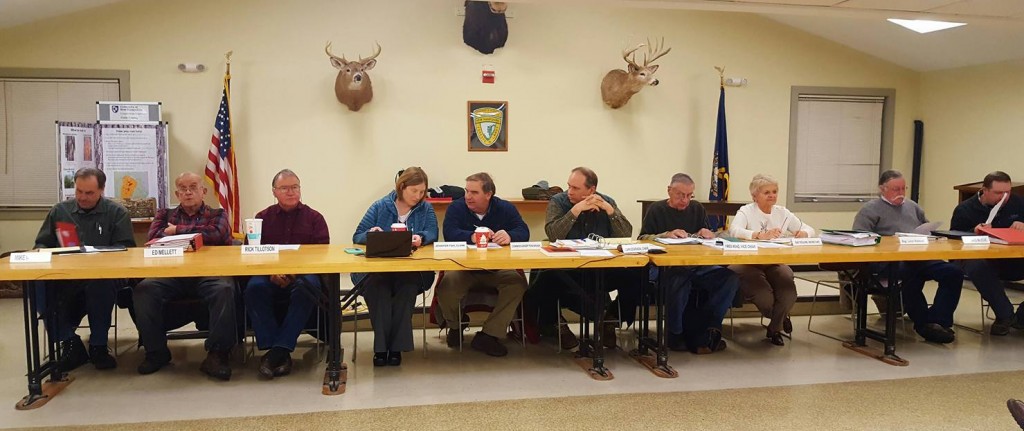
Coos Planning Board – Photo: Nickie Sekera
John Scarinza, Chair
375 Randolph Hill Rd.
Randolph, NH 03593
johnscarinza@ne.rr.com
603-466-5775
Fred King, Vice Chair
PO Box 146
Colebrook, NH 03576
fbking1@myfairpoint.net
603-237-8716
Edwin Mellet
1165 Lost Nation Road
Groveton, NH 03582
goldenrockfarm@hotmail.com
603-636-2630
Scott Rineer
PO Box 121
Errol, NH 03579
scott@wagnerforest.com
603-482-3851
Rick Tillotson
111 Munn Rd.
Colebrook, NH 03576
tillybloon@aol.com
603-490-9877
Michael Waddell
45 Alpine St.
Gorham, NH 03581
mkwad@ne.rr.com
603-466-5149
Thomas Brady
597 Ingerson Road
Jefferson, NH 03583
tom.brady@cooscountynh.us
603-586-4592
Jennifer Fish
PO Box 10
West Stewartstown, NH 03597
jennifer.fish@cooscountynh.us
603-246-3321
Rep. Leon Rideout
28 Causeway Street
Lancaster, NH 03584
rideout4rep@gmail.com
603-237-4429
Mark Frank
7 Grandview Drive
Lancaster, NH 03584
603-788-4825
Thomas Mccue
27 Cambridge Street
Berlin, NH 03583
atty@tfmccue.com
603-724-5605
Historical Resources:
The Stone Hotels of Mount Washington, Jeffery R. Leich, Appalachia, June 15, 1997
Possession of the Summit “A Prolific Subject of Contention”, Jeffery Leich
History of the Road, Mount Washington Auto Road
